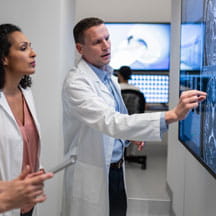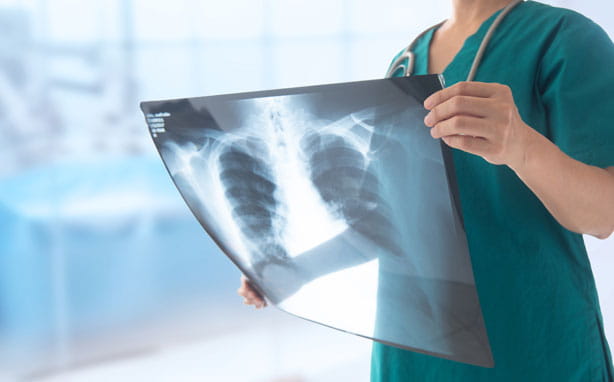Prior to 2019, Children’s Hospital New Orleans was not regularly reviewing staffing analytics in the radiology department. Patient volumes were steady. But in 2019, leaders wanted a better idea of growth projections for the department and began examining time and volume data from the previous three years.
They determined ideal staff-to-volume ratios, gained an understanding of day-to-day variances, and illustrated peak performance and staff waste. In 2020, Children’s Hospital New Orleans was identified as a top performer for staffing efficiency among CHA’s PROSPECT data participants.
“As management, we have to be cognizant of volume and evidence-based management,” Chadley Blackburn, directory of Radiology, says. “We try to use evidence-based management, prior history and data to build our scheduling model.”
Blackburn and Donna Goodlett, assistant director of Radiology, have established a department with flexible scheduling and an open-door policy that promotes transparency between staff and leadership.
After starting their journey towards data analysis and an improved staffing model, they identified performance expectations. Blackburn and Goodlett conducted weekly meetings with the hospital’s vice president of Operations to report on variances in productivity and identify necessary adjustments. Decisions that are made are then shared transparently with staff.
“We have frank conversations with our staff,” Blackburn says. “We listen to what they have to say and explain why we’re doing things for a certain reason.”
Scheduling staff
Children’s Hospital is working toward a Level II Trauma Center designation, so diagnostic and CT areas are staffed 24/7. Ultrasound and MRI team members are on call during off-hours. There is less of a focus on set shifts as there is on serving patients as needed, emphasizing flexibility across modalities.
Children’s Hospital uses PRN staff before leveraging the part-time staff pool. There are five PRN diagnostic technologists and two PRNs for CT. There is minimal overtime for staff with the exception in ultrasound that has only four technologists, requiring those team members to have more on-call hours.
Staffing a new service
In 2020, the hospital brought interventional radiology (IR) on as a full-time service with one radiologist and one IR physician assistant on staff. The hospital is also recruiting for an IR nurse to complete the team.
Tulane University is providing three additional weekend radiologists for staffing support as the hospital builds the new service line. The team also plans to offer telehealth services for pre-and post-appointment needs in the future.
Cross-training existing teams
A new CT training program helps shift staff to help across modalities. One trainee is selected per quarter based on merit from within the radiology department and the goal is to have six people complete cross-training by the end of 2021. These six team members will bring the CT team up to 10 people.
Blackburn and Goodlett are advocates for skill development for existing teams, encouraging staff to become cross-trained in one or two other modalities that are a natural fit with their original area. For example, those trained in diagnostic radiology can easily be trained in CT or MRI.
“If you’re registered in four or five modalities, that’s too many to stay competent in,” Blackburn says. “I feel comfortable having people hop in two, maybe three, modalities. I don’t want to put staff in a position where they are called in to help with a situation they are not familiar with.”
Patient management
Children’s Hospital’s radiology operates with a centralized scheduling model, using EPIC templates to assist in scheduling procedures. Since the hospital serves patients throughout the state, many patients travel to appointments. The team streamlines appointments to reduce the need for multiple visits.
For patients who require sedation, a nurse calls the family the day before the appointment to provide detailed information and instructions. The sedation department has a list in EPIC that identifies which radiology patients will need sedation that day.
Child life specialists are involved in MRI and CT to help keep the patient and family calm, which has increased satisfaction and efficiency. However, in MRI, technology has reduced the need for sedation. A media system allows the patient to watch movies and cartoons through goggles and reduces anxiety from claustrophobia.





